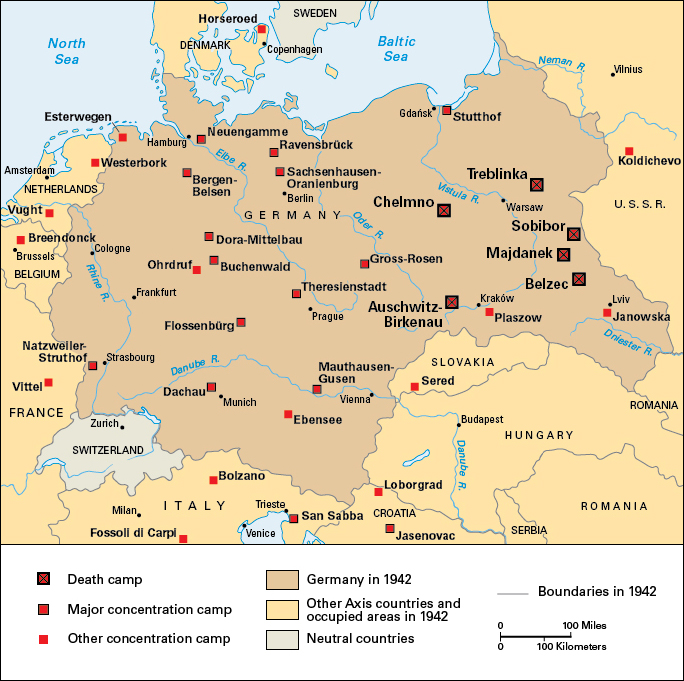Chełmno, << HEHL muh noh, >> was a death camp that Nazi Germany set up in Poland during World War II (1939-1945). The killing center stood at the edge of the town of Chełmno nad Nerem, near the city of Lódz. German Schutzstaffel (SS) troops and police managed the Chełmno death camp. The SS was a special Nazi military group.

Chełmno began operation in December 1941. The killing center consisted of a manor house and a clearing in a nearby forest. High wooden fences surrounded both areas. Trucks brought prisoners to the manor house from local towns and train stations. The prisoners were unloaded and forced to surrender their possessions. A few people were used for forced labor. The others were led into large vans behind the manor house. The Nazis piped deadly carbon monoxide gas into the vans, killing the people inside. The vans were then driven to mass graves dug in the forest camp.
In the summer of 1942, the Germans began burning the many thousands of corpses that had been brought to the forest camp. They burned the bodies in crematoria (furnaces for cremating dead bodies). Many of the previously buried bodies were exhumed (dug up) and burned.
Chełmno’s victims were mostly Jews from nearby towns in Poland. The Nazis murdered at least 152,000 people at Chełmno.
In March 1943, the Germans suspended operations at Chełmno and tore down the manor house. Killing resumed briefly at the Chełmno forest camp during the summer of 1944. The forest site was abandoned in January 1945. Investigators later reconstructed the history of Chełmno from documents, accounts of survivors, and the postwar trials of camp officials. Today, a memorial stands on the forest camp’s former grounds.
See also Concentration camp; Holocaust; Nazism; Schutzstaffel (SS).
